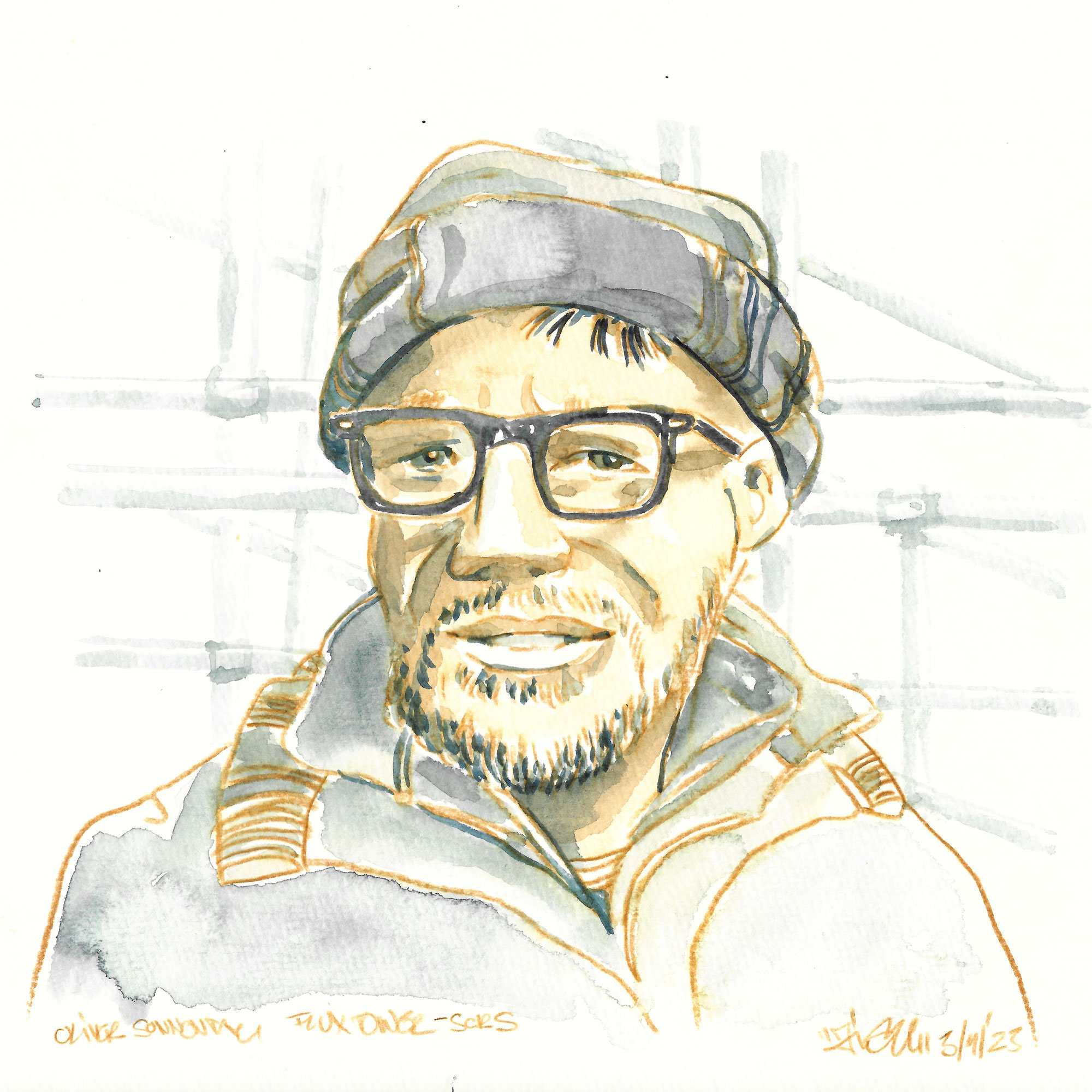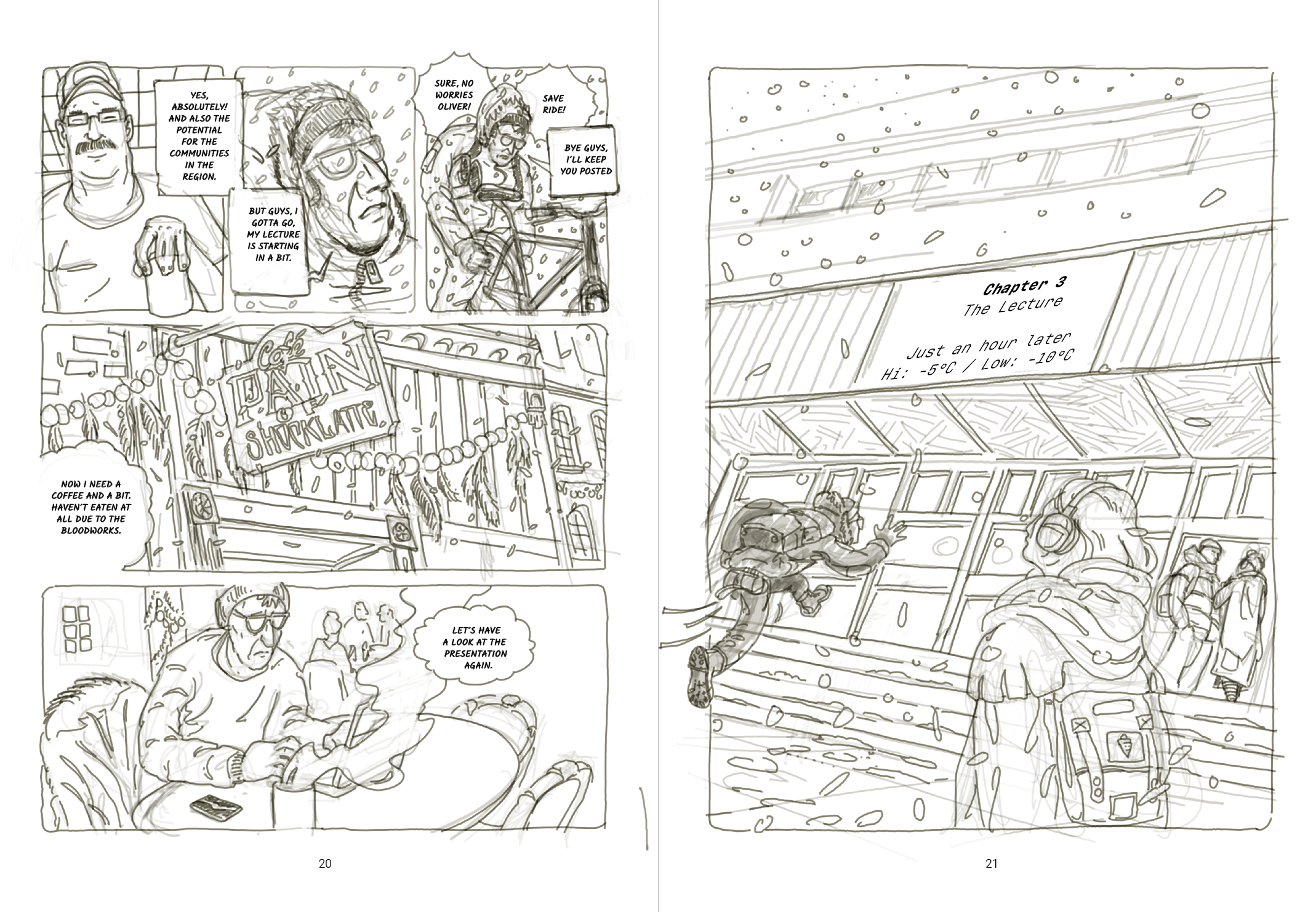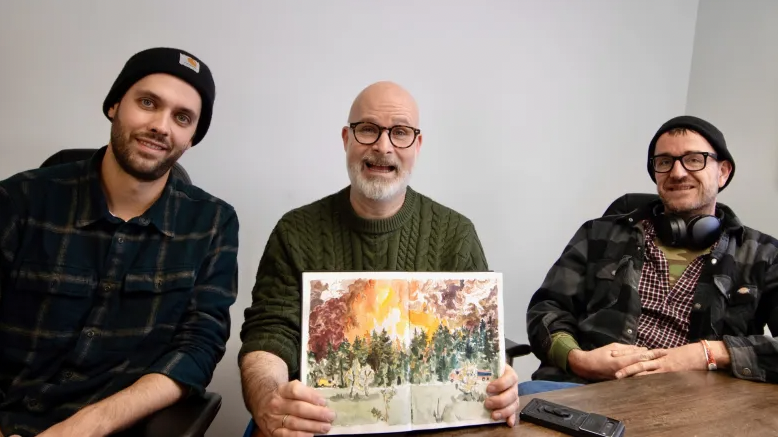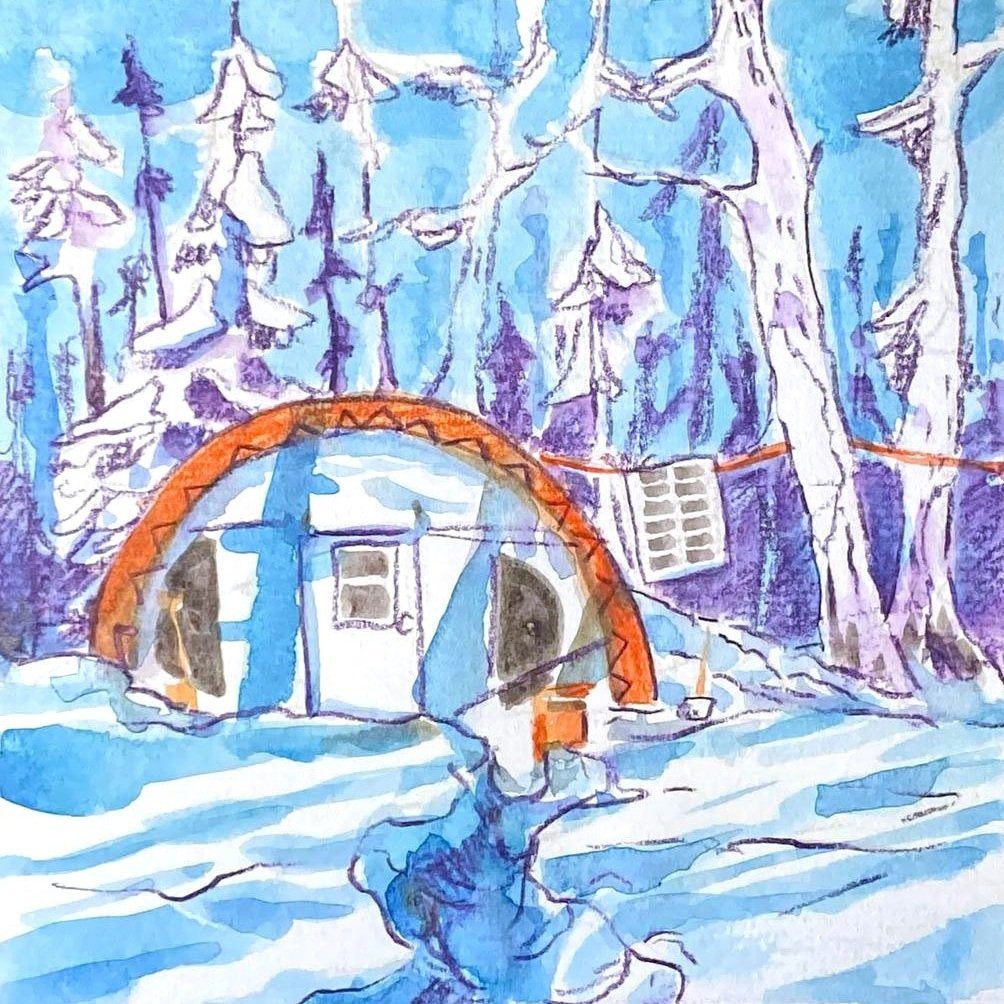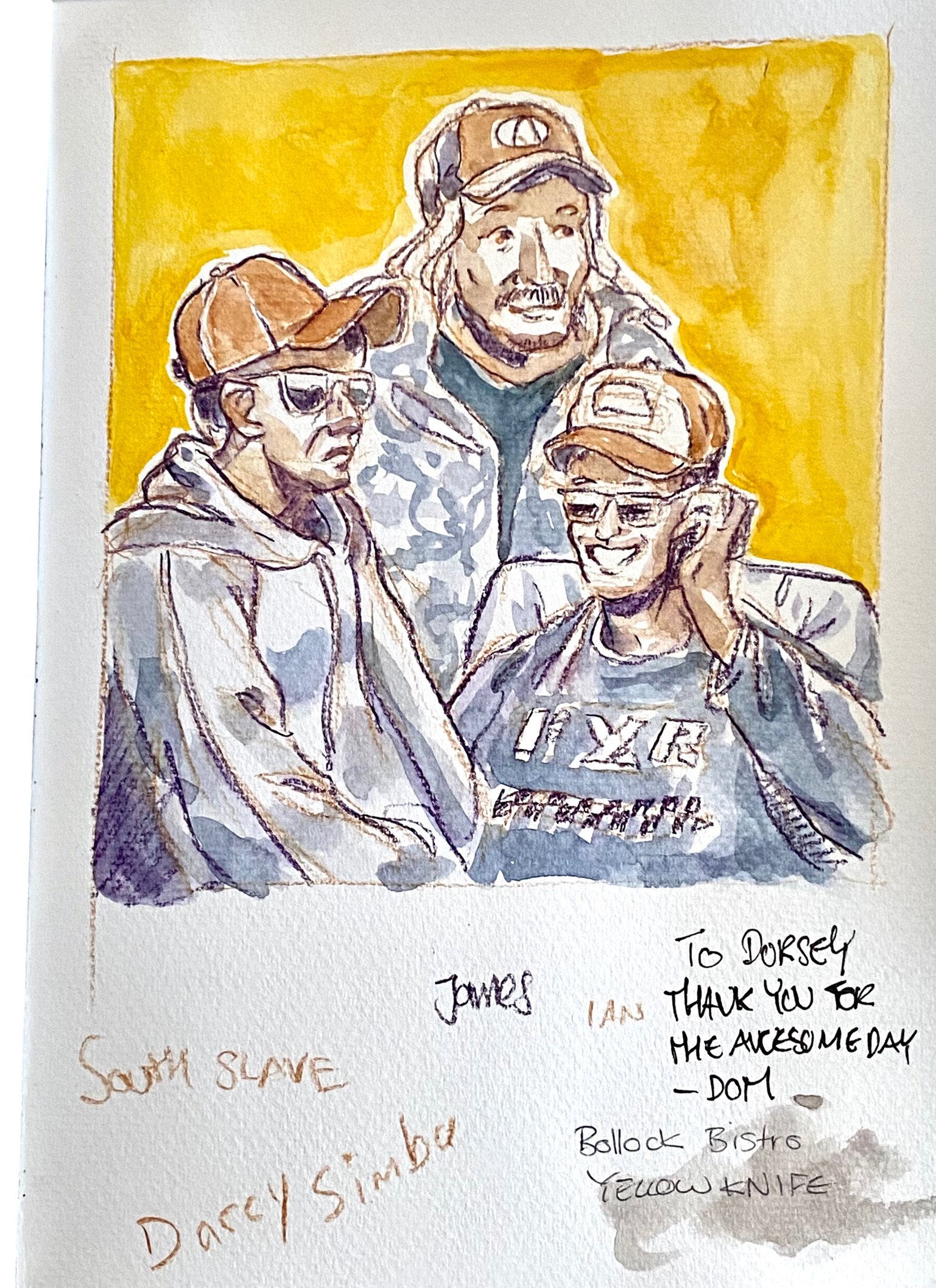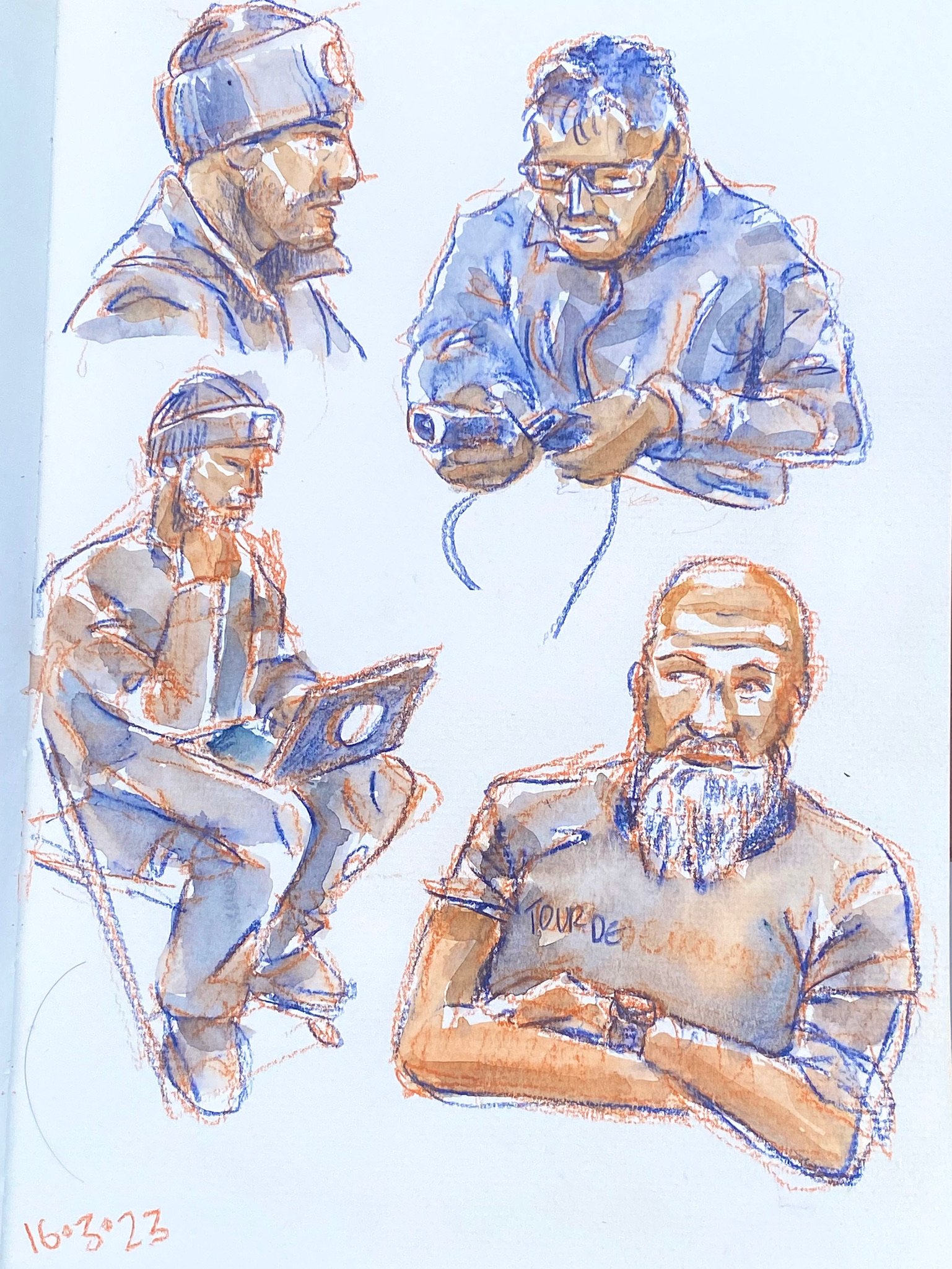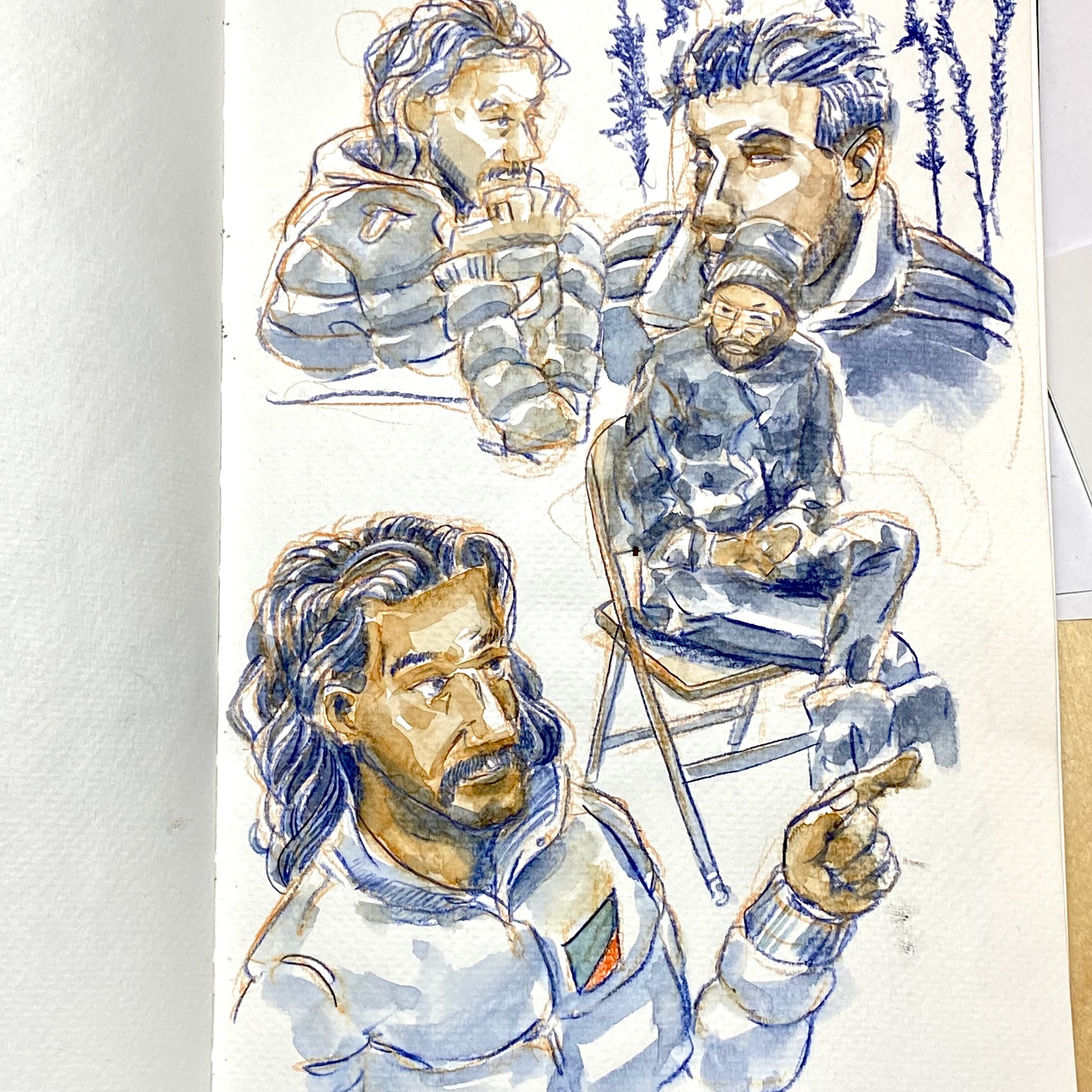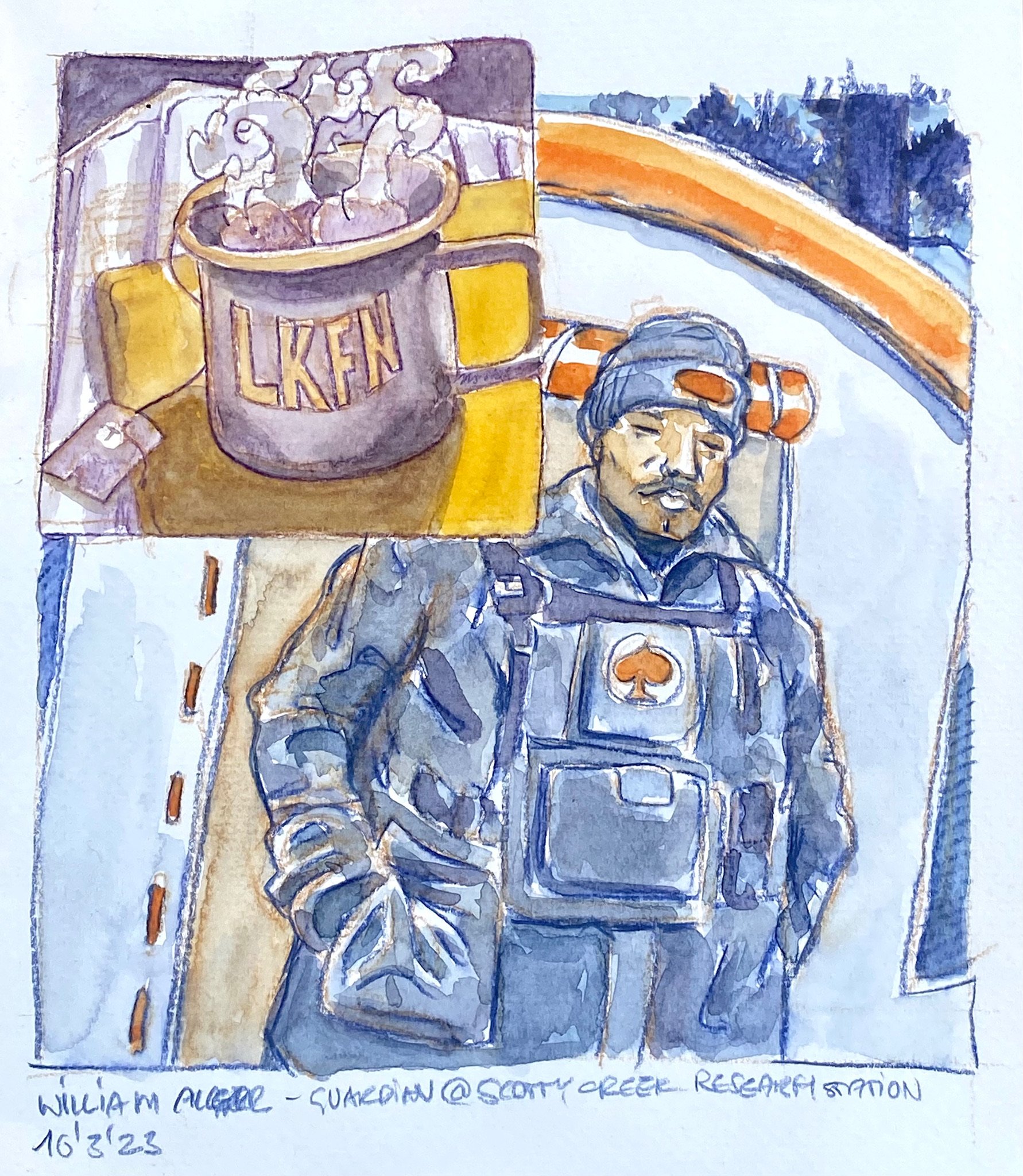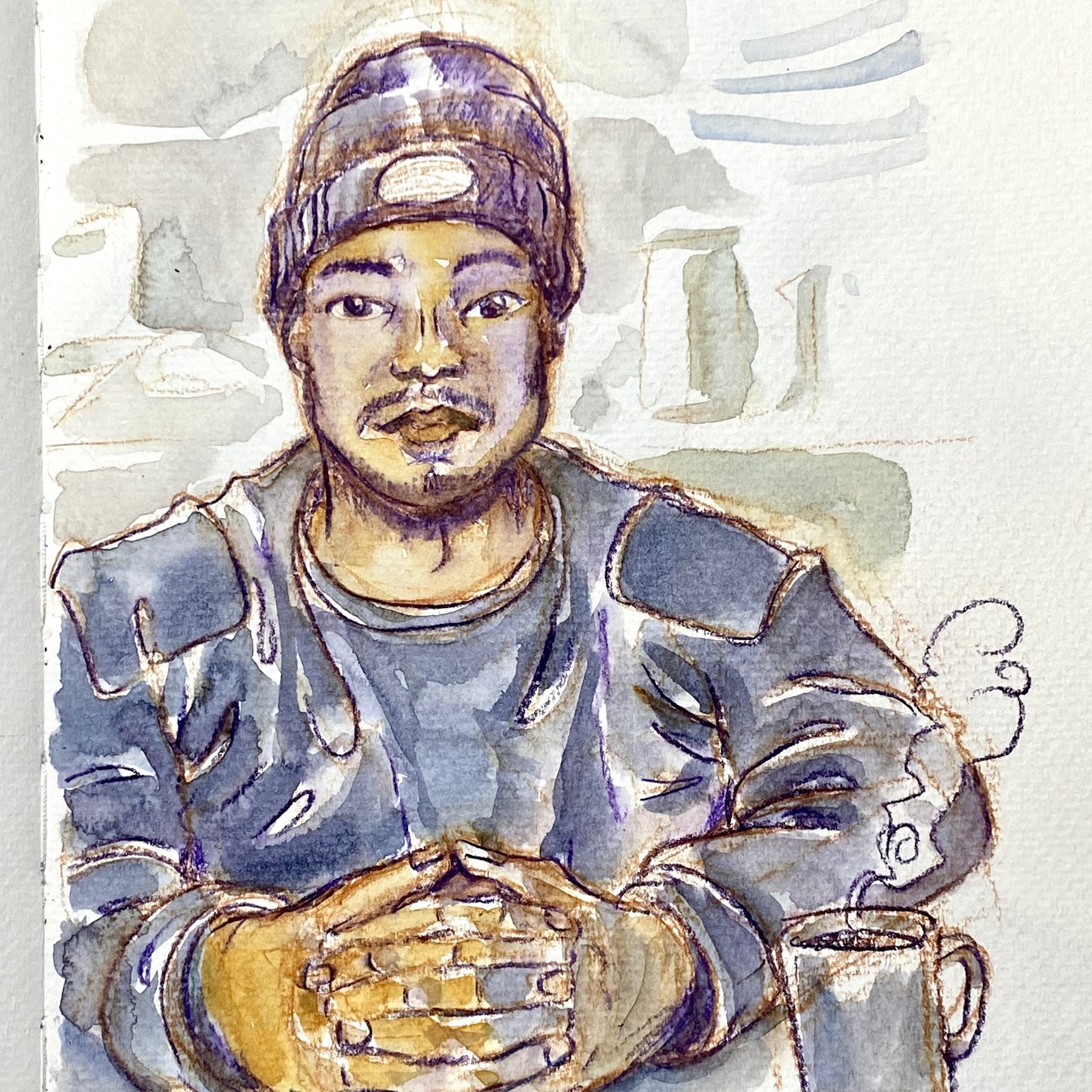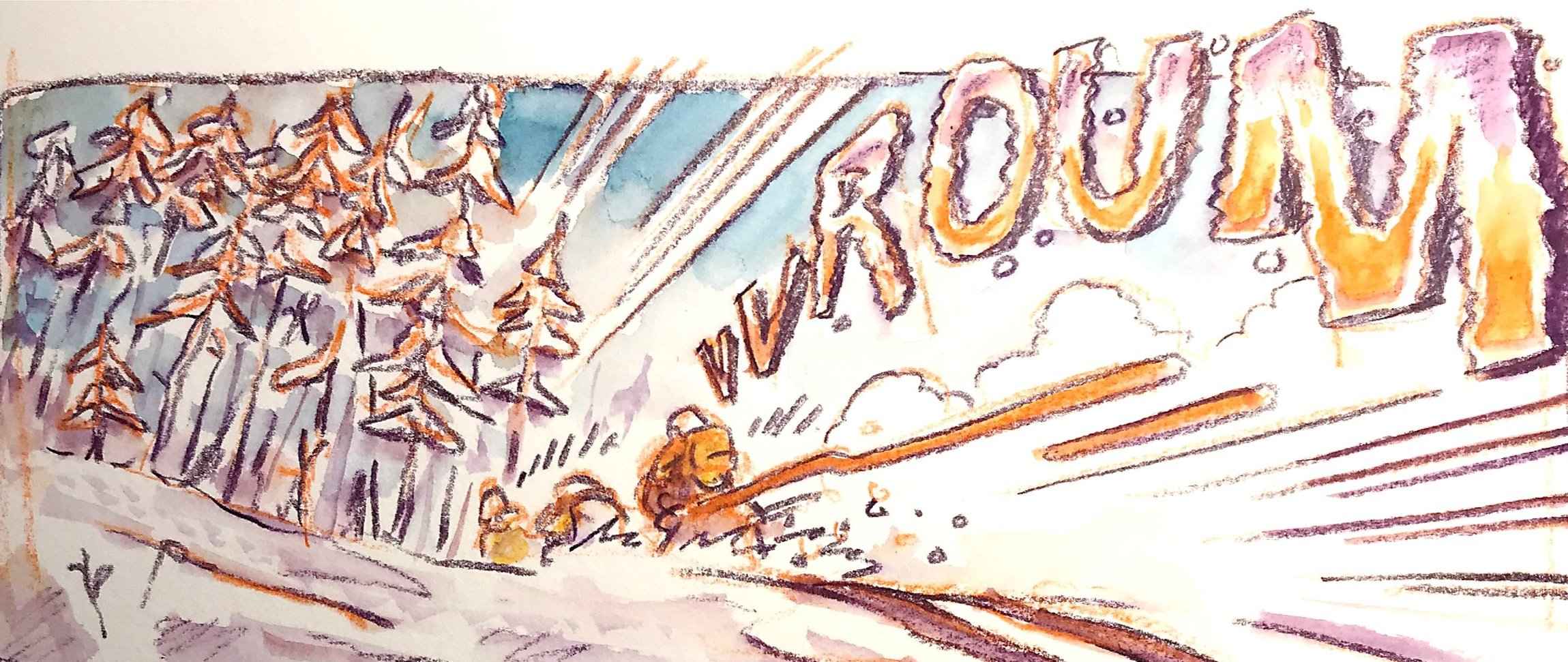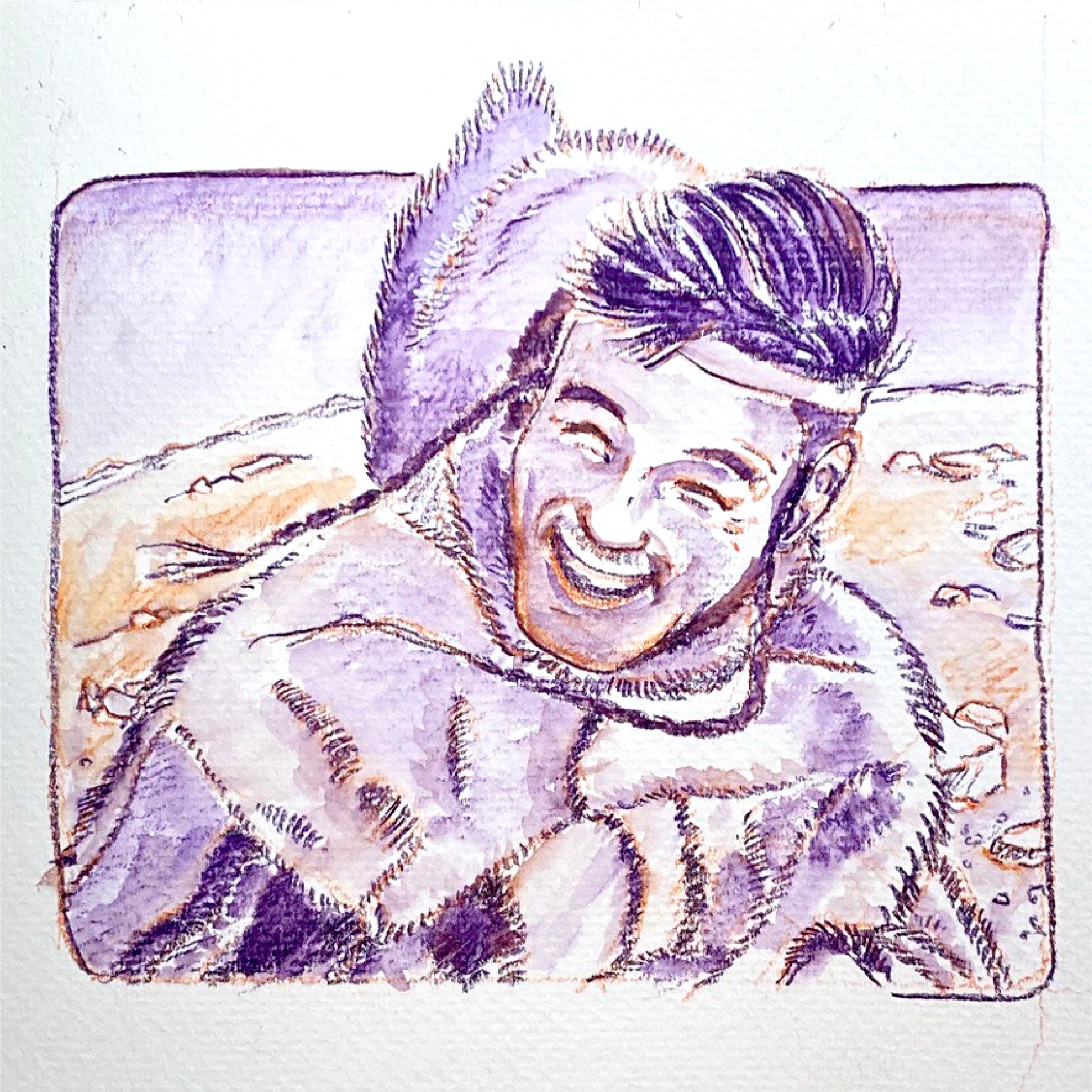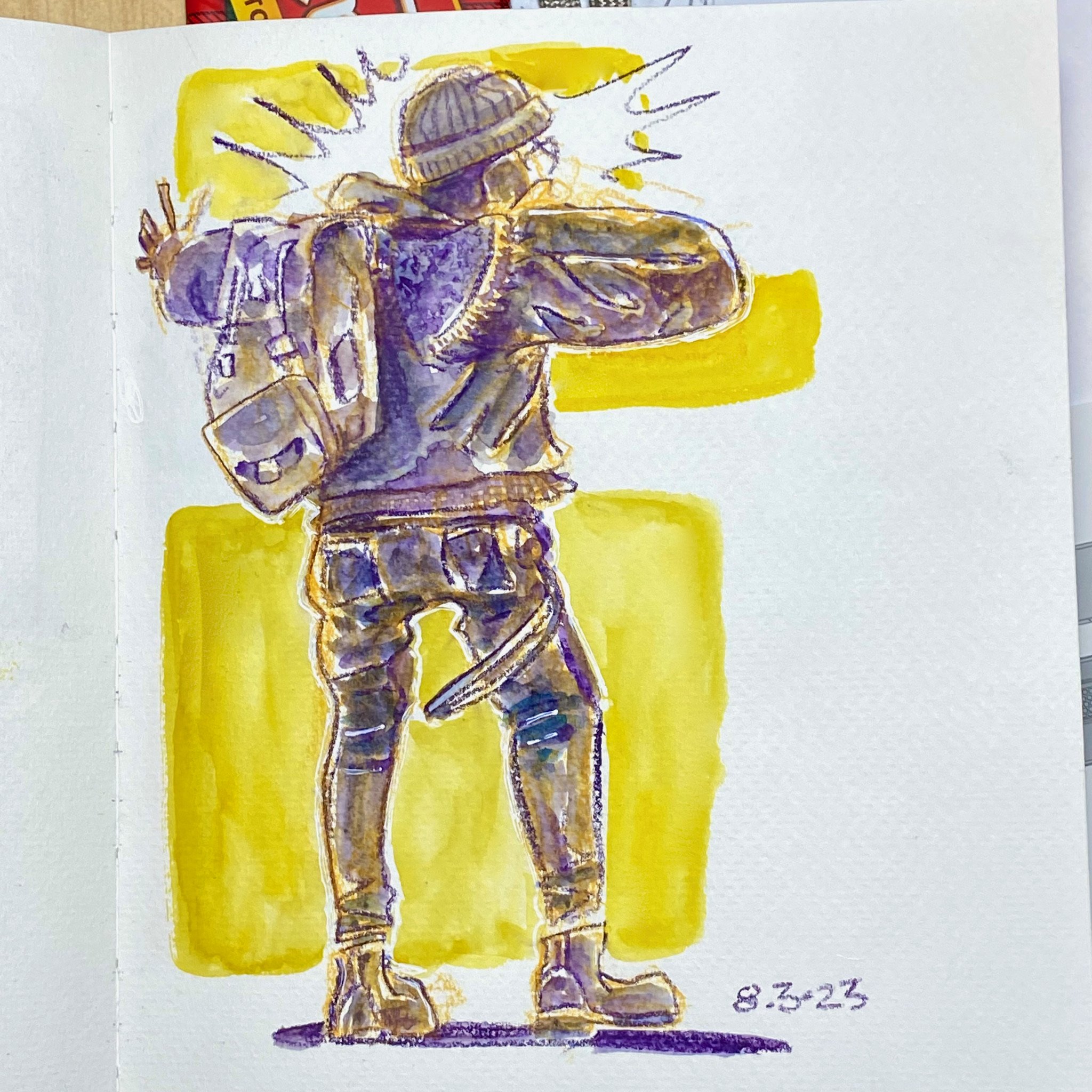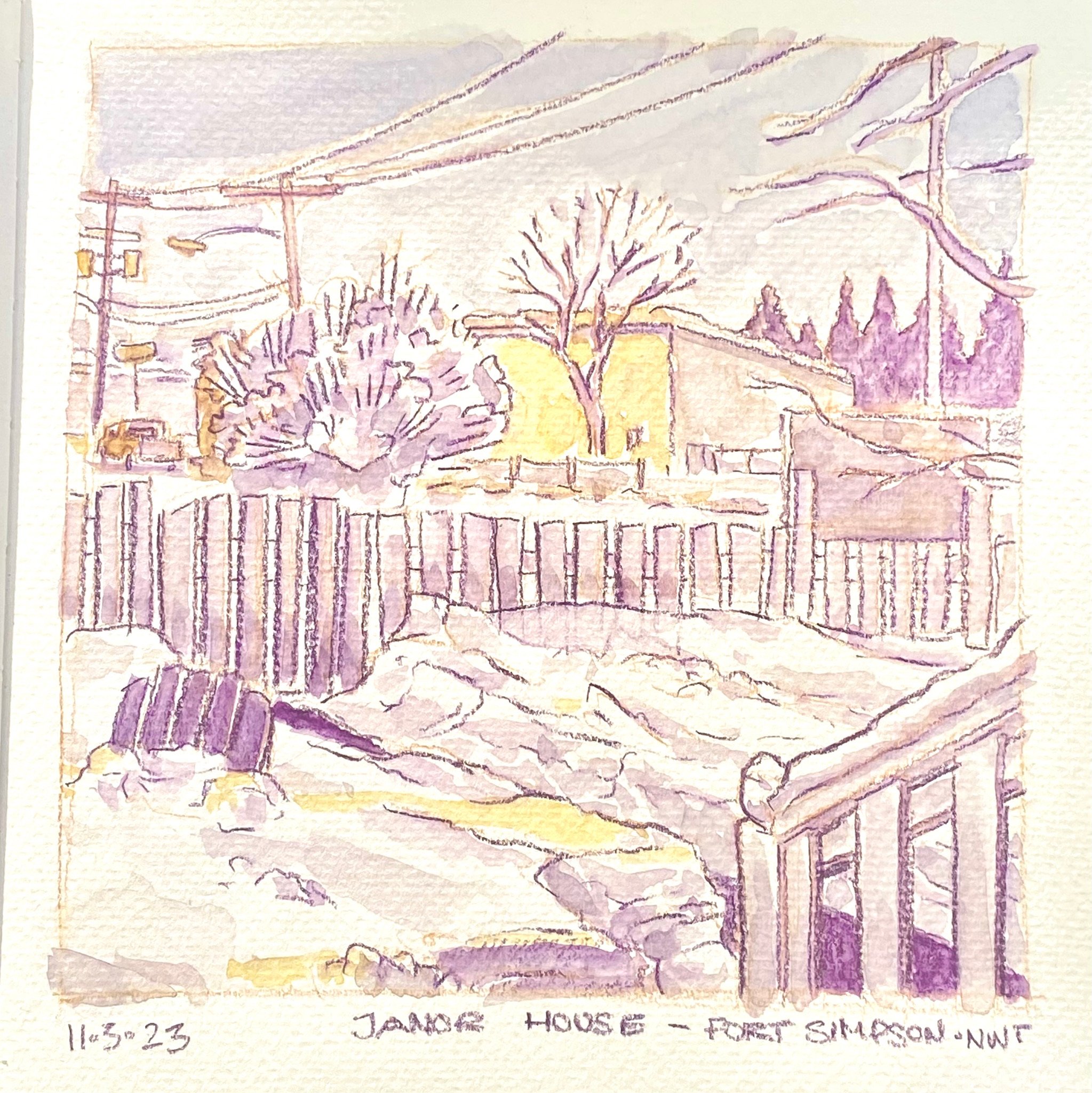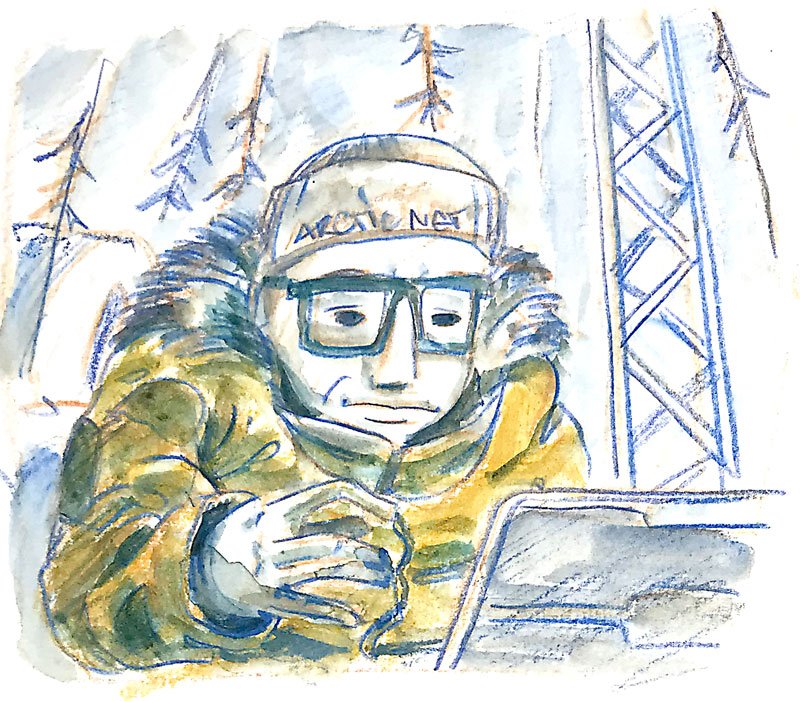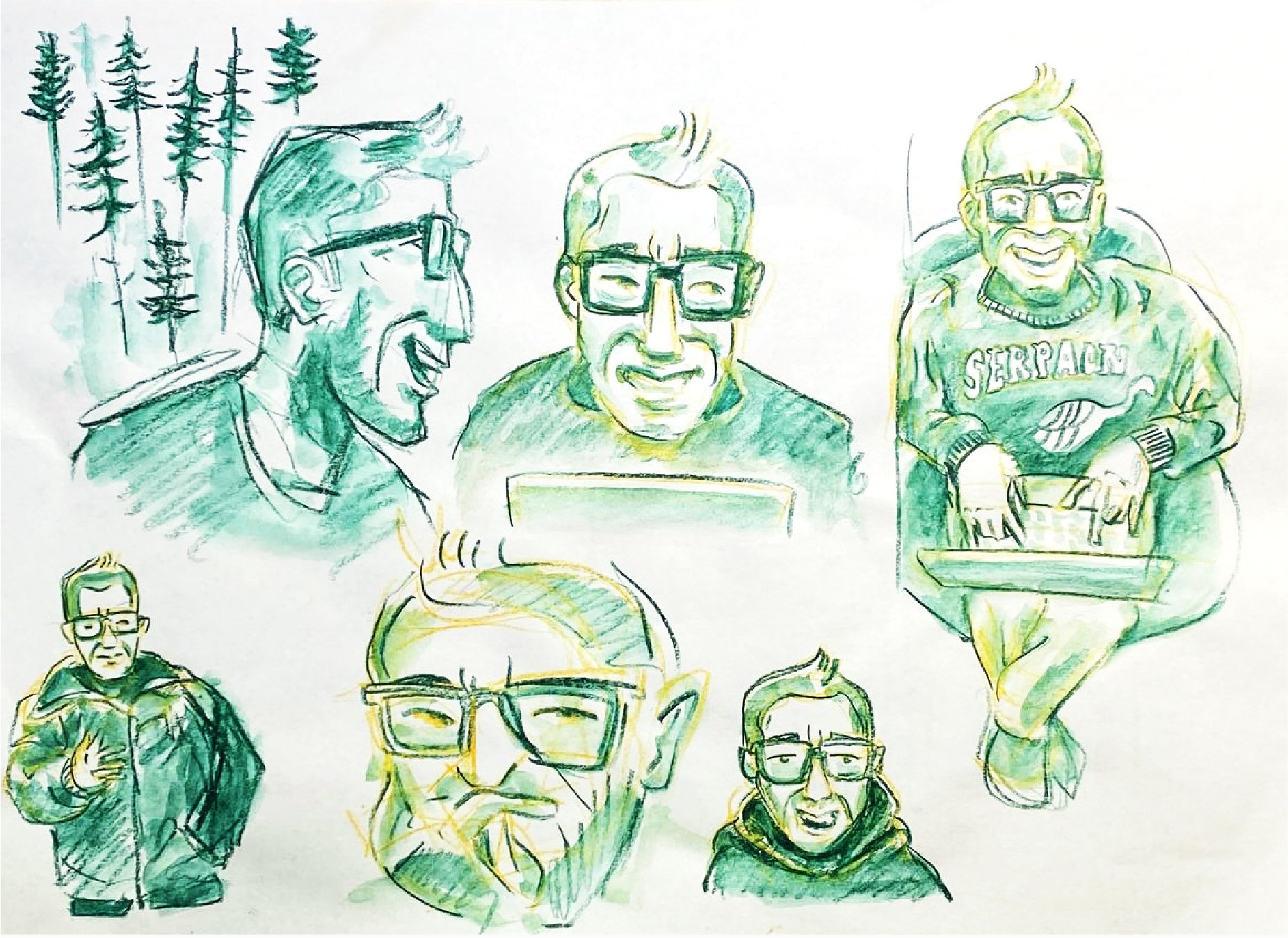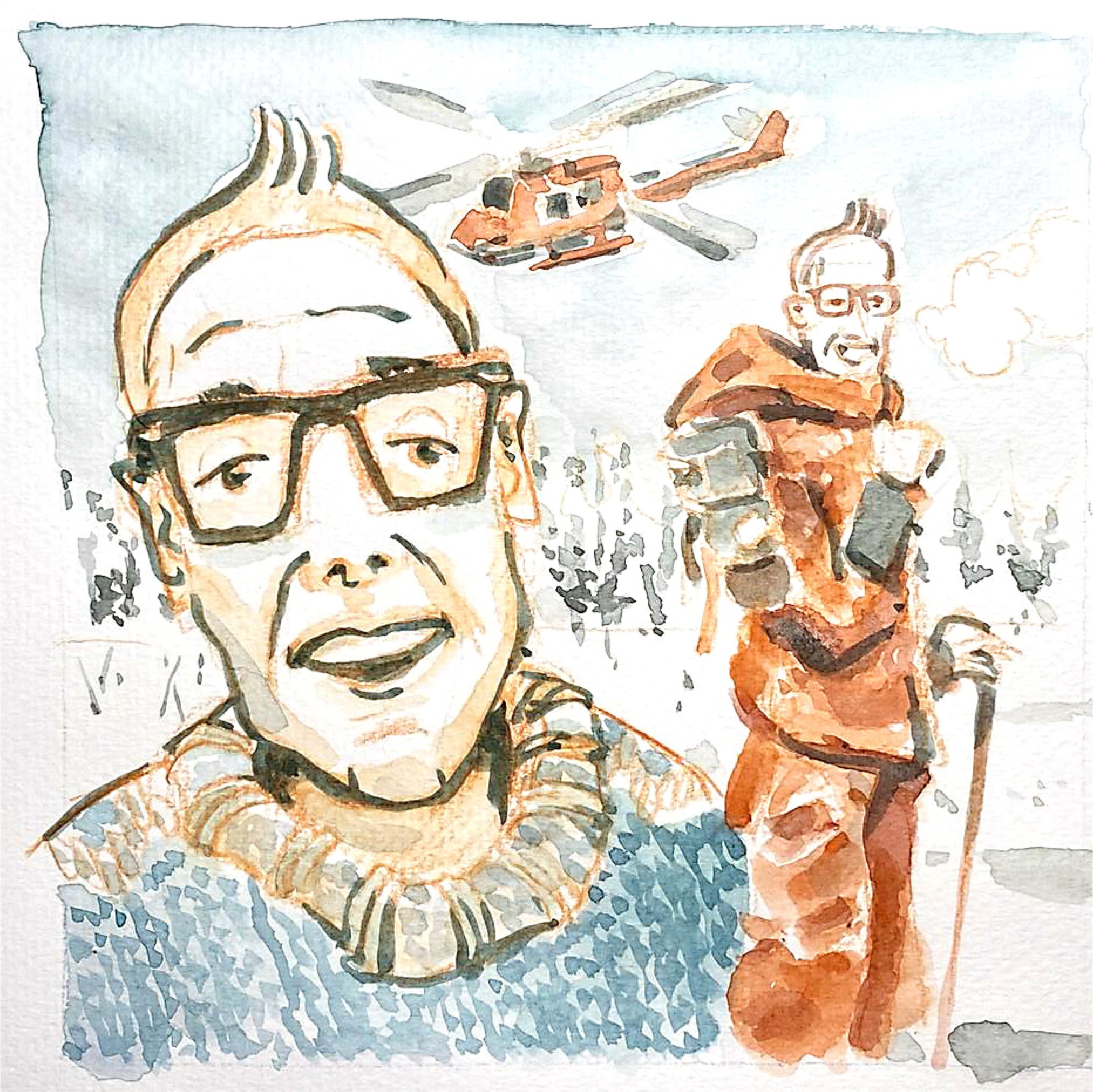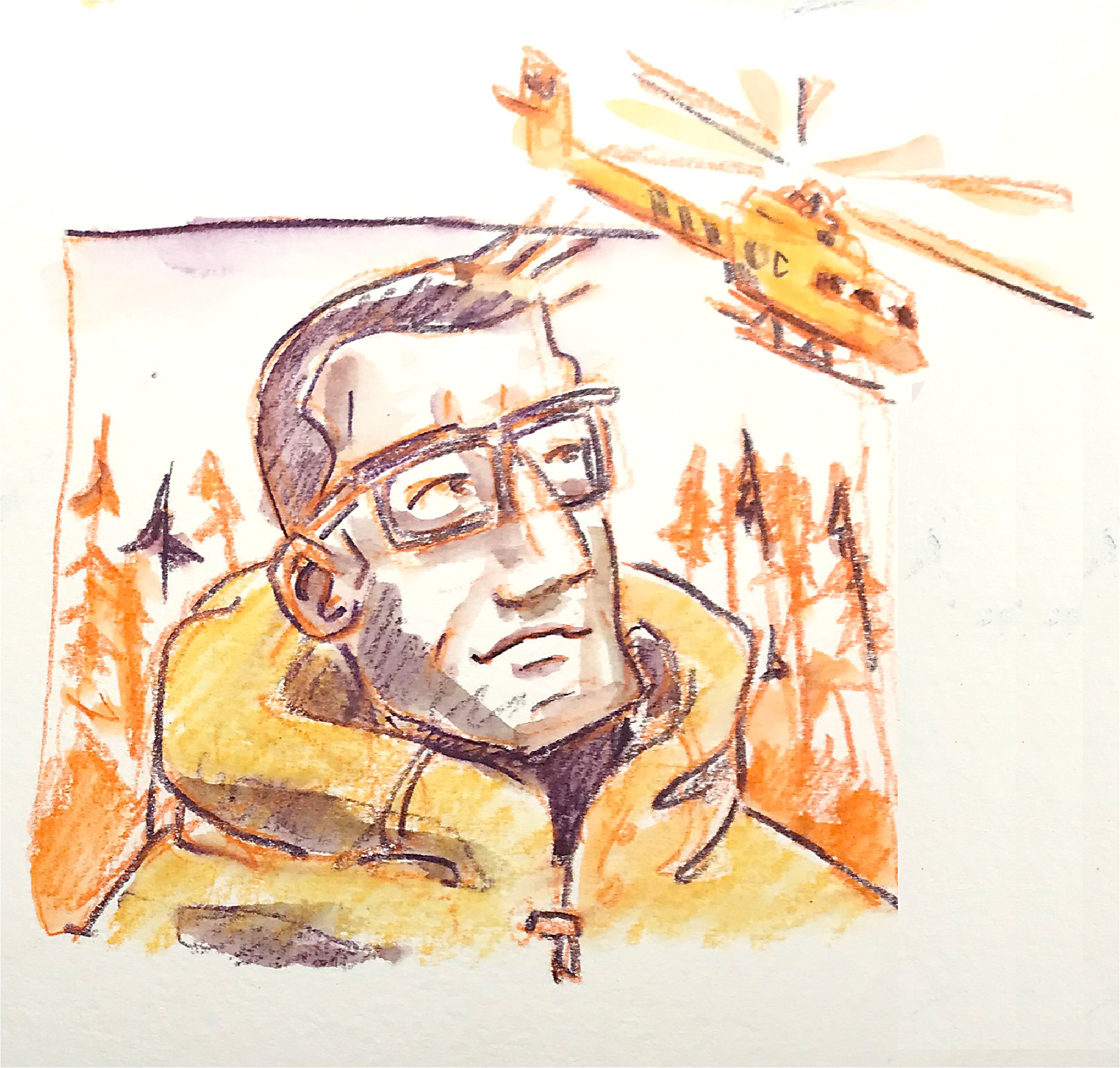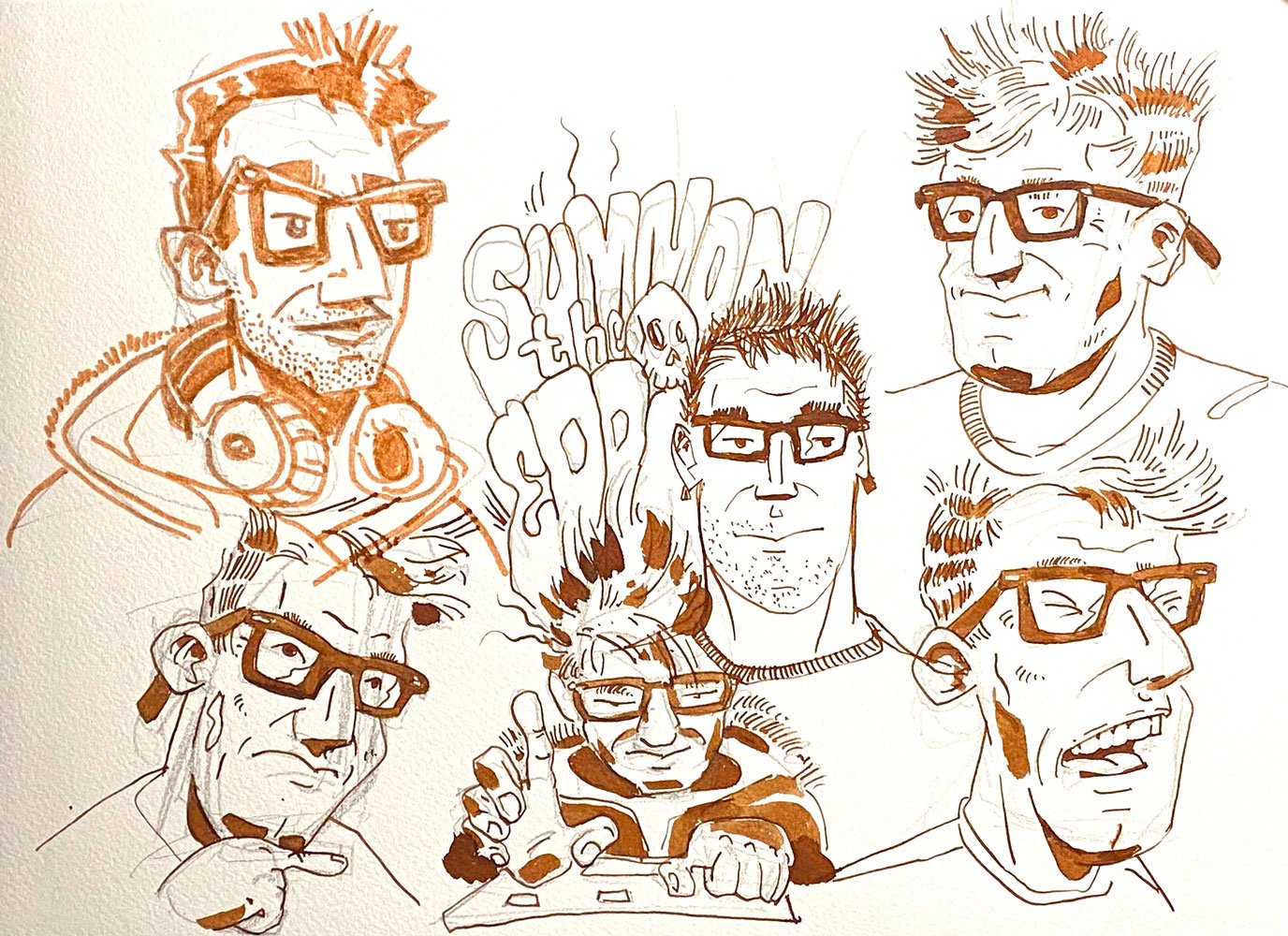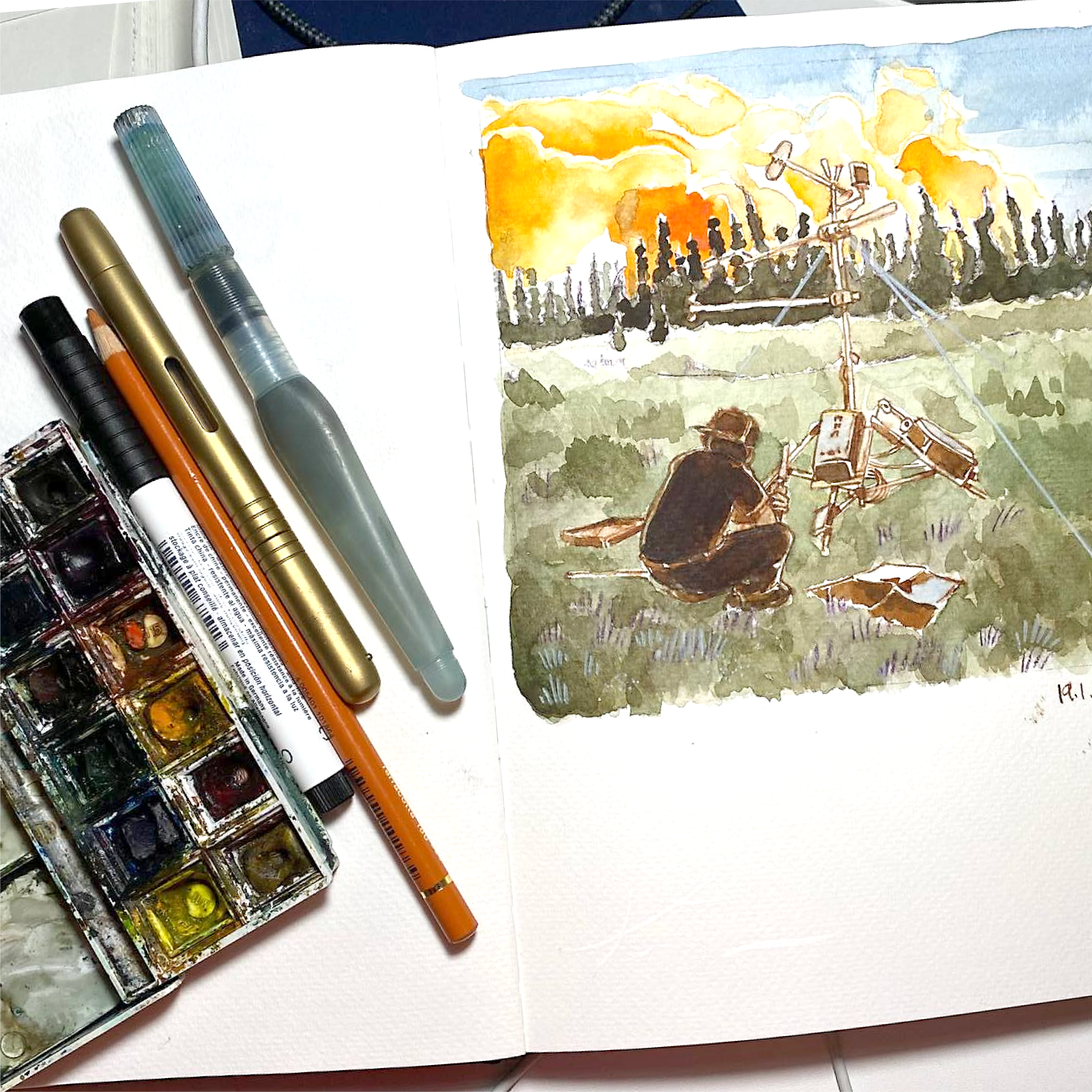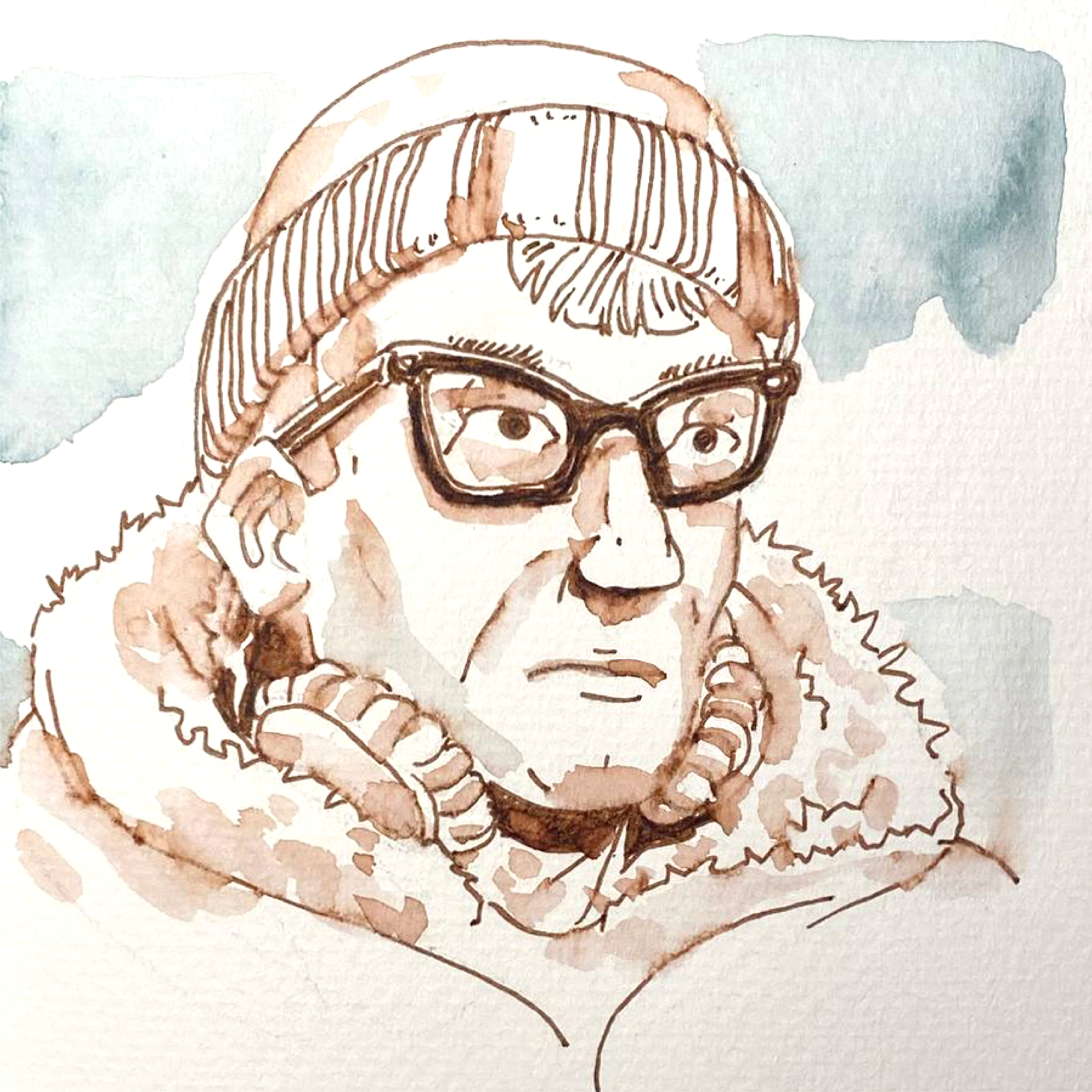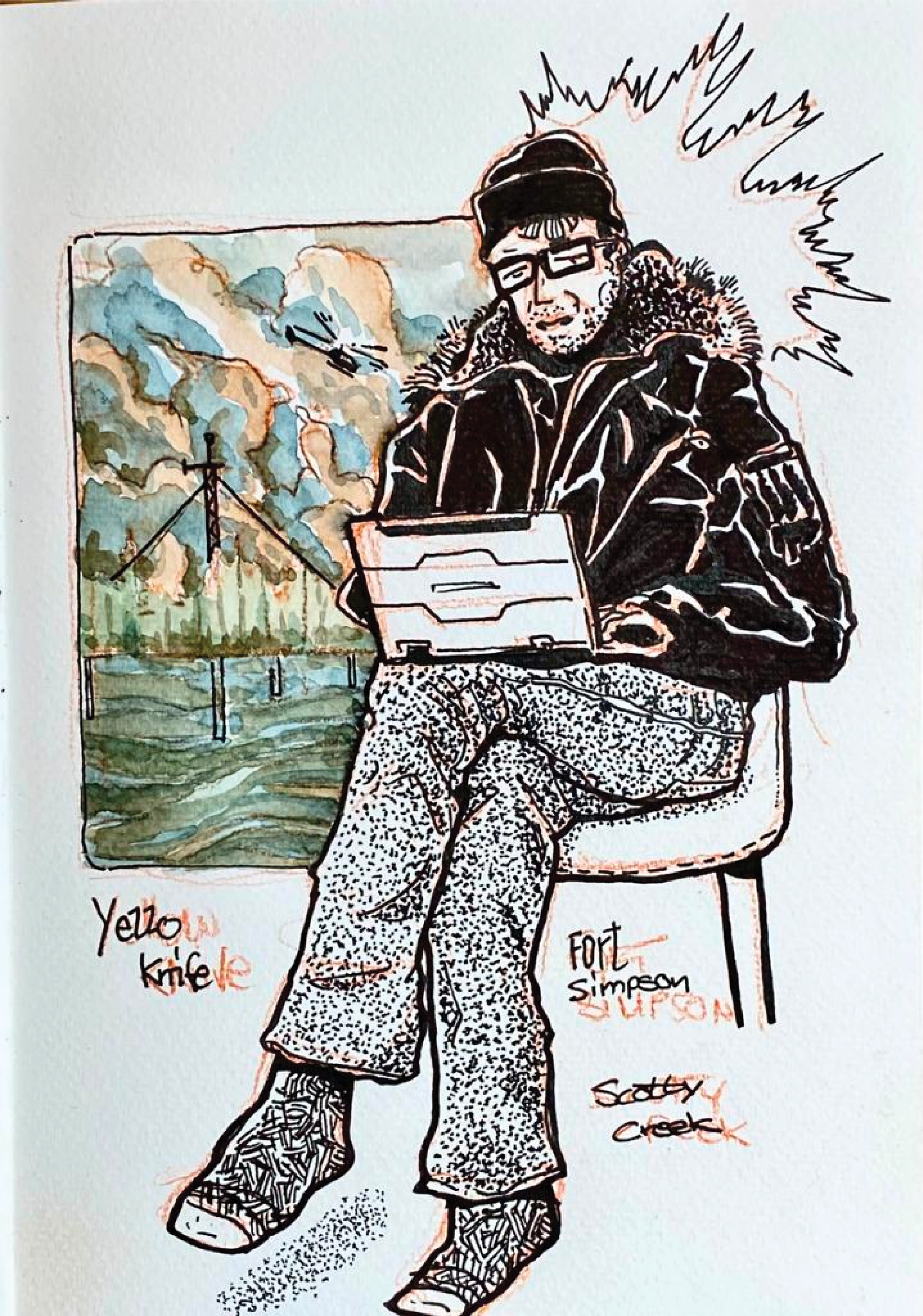Fire on the Land
«Fire on the Land» is the working title of a work in progress graphic novel project that blends journalistic reporting with narrative storytelling.
It delves into the daily struggles of scientist Oliver Sonnentag and his quest to confront climate change in Canada’s Northwest Territories.
Oliver, an experienced professor at the Université de Montréaal, dedicates his life to exploring the local and global consequences of thawing permafrost due to global warming. The daily academic grind isn’t Oliver’s cup of tea —he’s a field researcher at heart, eager to get his boots in the mud alongside other mavericks.
In October 2022, a wildfire destroyed Oliver's first and most cherished research tower at the remote Scotty Creek Research Station, Canada’s first Indigenous-led research facility.
Devastated and unsure if this is a sign to end the project after ten successful years, Oliver is inspired by a vivid dream to rebuild his tower. Now, he races against time to restore the tower before the start of the snowmelt season when traveling the soggy land becomes too cumbersome.
With the support of Dieter Cazon, the witty and visionary land resources manager of the Liidlii Kue First Nation, Oliver and his international team embark on an ambitious and risky journey into an icy wilderness, facing colonial legacy and many logistical challenges.
Science, humour, and lots of coffee are the key ingredients of Fire on the Land to illustrate the importance of daily resilience and intercultural friendships in the face of the climate crisis.
The graphic novel aims to highlight the adventurous nature of scientific research and describes the challenges of marginalized groups whose ancestral land is heavily affected by climate change.
Oliver's perspective makes the story tangible while emphasizing scientific precision. The story is commented on by Beavis & Bearta, two comical and critical spirit animals.
The light watercolor style connects to nature and conveys a documentary feel, contrasting hectic urban views with mesmerizing natural landscapes.
Production Team
Oliver Sonnentag
Main protagonist and scientific advisor, representing Western science.Dominik Heilig
artist and illustrator, shaping the events into a compelling narrative with input from Oliver and Dieter.Dieter Cazon
protagonist and a traditional knowledge holder of the Liidlii Kue First Nation, who shares community insights and recommends Indigenous literature and other valuable media.Status• Character Studies
• 170/180 pages script V.2
• 70 Pages storyboardPrevious References
Article at Cabin Radio (en)
We were invited to talk about the graphic novel project
The article made it into a NASA ABoVE newsletter
Article at CBC North (en)
The who, how and why about the rebuild of the burnt tower at the Scotty Creek research station (contains some of my photos)
Radio interview in CBC North (en)
Oliver Sonnentag and Dominik Heilig talk about the comic project and the story behind the burnt down flux tower and its role in global climate research.
Article in the L’Aquilon newspaper (fr) Page 8/9
about the re-set up of the tower (contains some of my photos)
Concept PDF with reading SampleReading Sample – Chapter 01
Storyboard exerpts
Photos from the research trip (2023)
A Journey to the Scotty Creek Research Station
Supported by the «atmosbios Lab» at the Université de Montréal, the illustrator Dominik Heilig accompanied Oliver on his trip to the Scotty Creek Research Station to rebuild the research tower. During this journey, Dominik met protagonists, conducted interviews, sketched, all while gaining an understanding of the challenges involved in field-research in remote areas.
After the trip it was a priority to develop a solid understanding of the scientific aspects and especially the decolonisation component. This requires ongoing research via scientific literature and articles, conversations with the involved scientists and members of the Liidlii Kue First Nation, podcasts, tv-shows, music and graphic novels.
Beyond telling the story, we will also provide an annotated bibliography for reference and further reading, and introductions by western scientists and traditional knowledge holders from the Liidlii Kue First Nation.
More sketches and studies
Media List / Bibliography (ongoing)
-
Yamoria the Lawmaker – Stories of the Dene, George Blondin
Trapping is My Life, John Tetso
Dawn of everything, Graeber & Wengrow
Mooratlas – Daten und Fakten zu nassen Klimaschützern, Heinrich Böll Stiftung
Stories Told: Stories and Images of the Berger Inquiry, Patrick Scott
Lahontan’s New Voyages To North-America
Permafrost for Homeowners, Government of the NWT
Schockwellen, Claudia Kemfert
All the Quiet Places, Brian Thomas Isaac
Humankind: A Hopeful History, Rutger Bregman
Indigenous Storywork, Jo-Ann Archibald
Braiding Sweetgrass, Robin Wall Kimmerer
-
World Without End, Christophe Blain, Jean-Marc Jancovici
Paying the Land, Joe Sacco
Ducks, Kate Beaton
Vertigo Grönland, Hervé Tanquerelle
The Ice Wanderer and Other Stories, Jirō Taniguchi
-
What on Earth (Revisiting the Flood in FS, Laura Lynch, Liny Lamberink)
Kemferts Klima Podcast, diverse
Carbon Copy
The Urbariginal, Rudy Kelly / CBC
Permafrost peatlands and mental health with Dr. Merritt Turetsky - For Peat’s Sake
Thawing Frontiers, Lyna Mansouri
(Unpublished) -
-
Item desBuilding local capacity for community-based micrometeorological monitoring
Oliver Sonnentag, PhD
CRC in Atmospheric Biogeosciences
Elyn Humphreys, PhD ProfessorPermafrost Hydrology in Muskeg Lands
Masaki Hayashi, Bill Quinton, Alastair McClymont, Brendan Christensen, Larry Bentley, Agnès RivièreChu et al. (2021), Representativeness of Eddy-Covariance flux footprints for areas surrounding AmeriFlux sites. Agricultural and Forest Meteorology, 301–302, 108350.
Securing Indigenous politics: A critique of the vulnerability and adaptation approach to the human dimensions of climate change in the Canadian Arctic
Emilie S. Cameroncription -
Reservation Dogs (2021-2023)
Smoke Signals (1998)
Atanarjuat: The Fast Runner (2001)
Using Indigenous knowledge to tackle climate change
Understanding Indigenous Science
"Since Time Immemorial": How Indigenous People Are Reviving Traditional Stewardship




